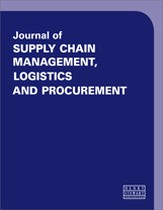Reducing inventories while improving delivery performance
Abstract
Industrial coatings are often customer-specific products, which have to be adjusted to the specific application conditions of each application plant. To meet their high specifications, typically more than 15 different raw materials are needed, and the best-fitting supplier is selected. Short lead times and relatively high transport costs require decentralised production. Minimising inventories is therefore difficult. Industry benchmarks show that mid-sized coatings companies typically have a higher ratio of inventories to sales than large companies. Internal benchmarking can reveal optimisation potential if similar-sized and positioned plants are compared on their days of inventory (DOI) as an average of the individual months. By setting DOI targets and introducing regular supply chain telephone conferences with all sites, improvements can be achieved quite easily on excessive inventories. Highlighting the percentage of expired or aged stocks within the total inventory will identify further reduction potential. Here it is important to look at gross values as financially, these expired and aged materials are often already written off. Raw material consignment stocks can be increased in cooperation with procurement while consignment stocks at customers need to be addressed together with sales. Taking these individual measures together, it is possible for even a mid-sized company to achieve a comparable performance to a large company. It is usually assumed that high inventory levels are necessary to achieve a good delivery performance. This is not necessarily true, as the better planning necessary to reduce inventories in a controlled way will also benefit demand planning. Besides, less cluttered warehouses will shorten the time for picking raw materials and increase compliance with first-in, first-out principles. This paper will give an example of how inventories were reduced in Beckers while at the same time lead times were improved. It will be demonstrated that the conventional wisdom about high inventories being necessary for a good delivery performance might be a myth when it comes to non-standardised items that are manufactured from varying raw materials. It thus could help supply chain managers in their argumentation with demanding sales colleagues.
The full article is available to subscribers to the journal.
Author's Biography
Karsten Eller is the Chief Operating Officer (COO) of Beckers Group, a privately owned global industrial coatings company with more than 150 years of history. Beckers is the global market leader for coil coatings, but also a leading supplier for other industrial paints. Karsten is responsible for production, supply chain management, environmental health and safety (EHS), procurement, IT and research and development (R&D) coordination. Other roles he has previously held in Beckers were sustainability, controlling, communication and the business unit Americas. Prior to Beckers, Karsten worked in construction chemicals for BASF and Degussa (now Evonik) and in various positions in BASF’s intermediates division. Throughout his career he has been actively involved in many merger and acquisitions (M&A) projects, not only in acquiring or divesting companies, but also when being acquired. Apart from Germany, Karsten was based for many years in Asia and twice in the US. He holds a PhD in chemistry and has studied at TU Berlin and Yale University. Karsten is a regular speaker on supply chain management at conferences.
Citation
Eller, Karsten (2020, September 1). Reducing inventories while improving delivery performance. In the Journal of Supply Chain Management, Logistics and Procurement, Volume 3, Issue 1. https://doi.org/10.69554/FLDQ4873.Publications LLP
